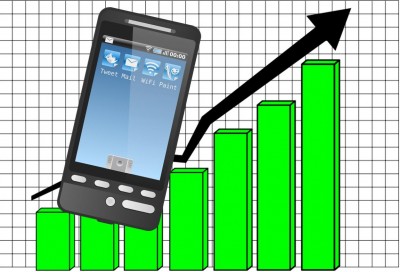According to the real time analytics that were recorded by IBM, this year’s shopping trends greatly beat out 2013.
On Thanksgiving Day, the unofficial start to the holiday shopping season, family members assembled to enjoy each other’s company, to watch football, to eat a wonderful feast, but when it was all over, they looked to mobile commerce to look for great deals.
The real time analytics from IBM for Thanksgiving Day showed online sales spiked 14.3 percent over the same day last year.
Mobile traffic made up a massive 52.1 percent of all online traffic on Thanksgiving Day, this year. This means that the figure rose by 22.4 percent when compared to that same day in 2013. When looking more specifically at the shopping side of mobile commerce, IBM found that of all online sales, those made over smartphones and tablets accounted for 32.3 percent. This was higher than last year’s figure by more than a quarter, as it represented an increase of 25.4 percent.
This success in mobile commerce on that day was explained by a number of different factors.
 Those contributors included the following:
Those contributors included the following:
• Consumers were eager to discover great online bargains, even when the stores were closed. The average order value (AOV) was 1.8 percent lower than it was last year, at $125.25. That said, those shoppers were buying an average of 4.3 items per order, which was an increase of 16.2 percent. This suggests that people were actually buying more, but they have become more savvy when it comes to finding ways to save such as through the use of online rebates and coupons.
• Smartphones were being used to browse for products, but mobile purchases were made over tablets and many still looked to their laptops and desktops. Smartphones may have driven 36.4 percent of the total online traffic (over double that of tablets, which represented 15.4 percent of online traffic), but sales over tablets made up 17.9 percent of the total and smartphones made up only 14.4 percent of the total. Desktops still reigned supreme over mobile commerce at 67.6 percent of the online sales total.
The former handset maker has now unveiled a new product that will run on Google’s mobile software.
Nokia has announced its official return to tablet commerce with the unveiling of a mobile device that will be running on the Android operating system, and will mark a return of the former smartphone manufacturer into the world of hardware.
This unveiling of the Nokia tablet came only a few short months after Microsoft purchased its handset business.
This new addition to the tablet commerce marketplace will be called the N1 and will be using Nokia’s own software on top of Android. This, according to the Nokia head of products, Sebastian Nystrom, who spoke in Helsinki at the Slush technology conference. The device will sell for $249 and will be both made and sold by the Foxconn Technology Group. The first release of the tablet will be in China, during the first quarter of next year, but Nokia expects that the N1 will become available in other markets not long afterward.
This entry into tablet commerce is just the latest in a number of sharp turns the company has taken.
Nokia has been around for 149 years and has managed to keep itself alive through its willingness to transform itself while hopping from one industry to the next, as necessary. Rajeev Suri has been its CEO since May and was behind the sale of the company’s mobile phone unit – which was bleeding money – to Microsoft, for around $7.5 billion. Suri is now stepping out from the wireless network equipment field, which currently makes up about 90 percent of the sales of this Finland based company.
Nystrom explained that “We wanted to start with something small that caters to our fans,” adding that “There is room for better products out there.”
In response to this announcement, the shares at Nokia rose immediately by 1.5 percent to reach 6.31 euros. The stock rose by 7.7 percent this year, already, giving a market value to the company of 23.6 billion euros ($30 billion). It will be interesting to watch the interest generated in the new tablet commerce offerings at Nokia once the product is available for purchase.
 Those contributors included the following:
Those contributors included the following:
